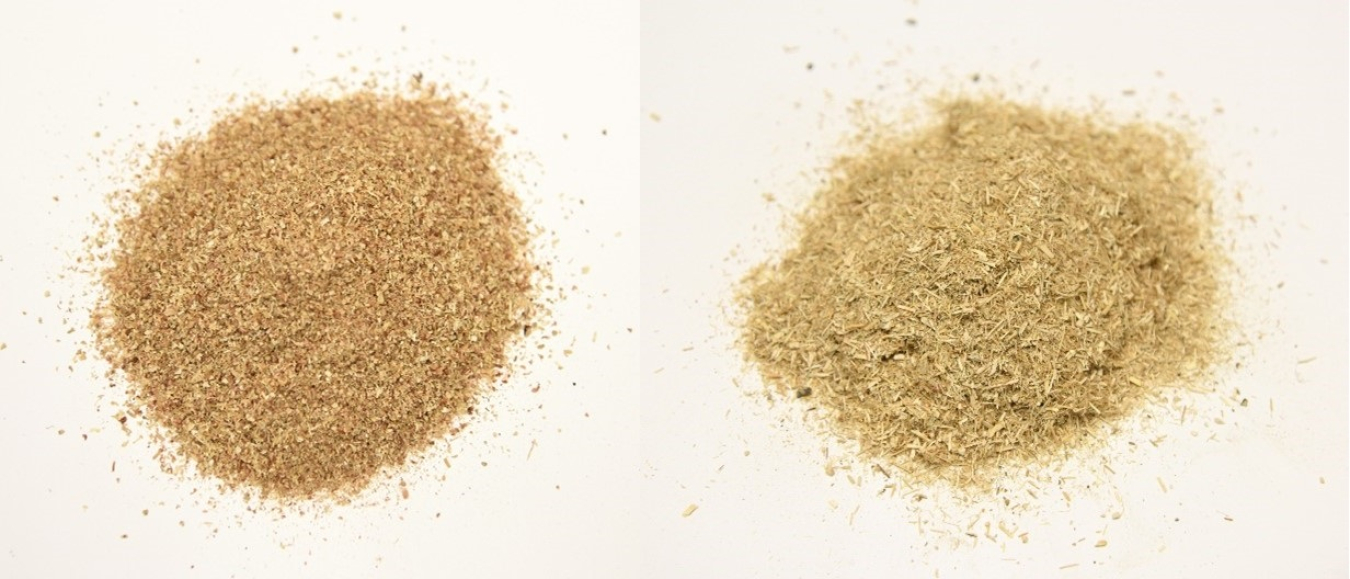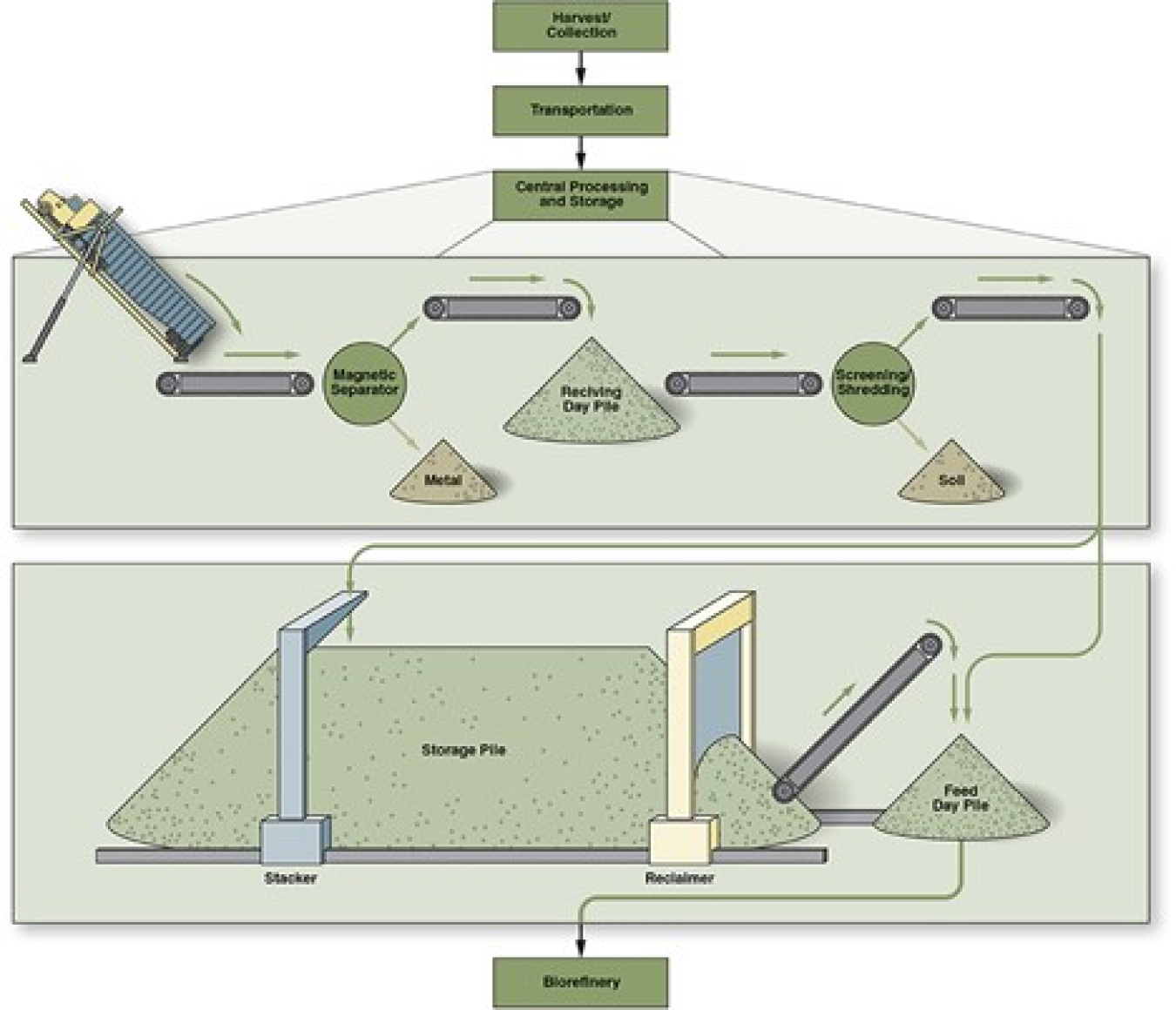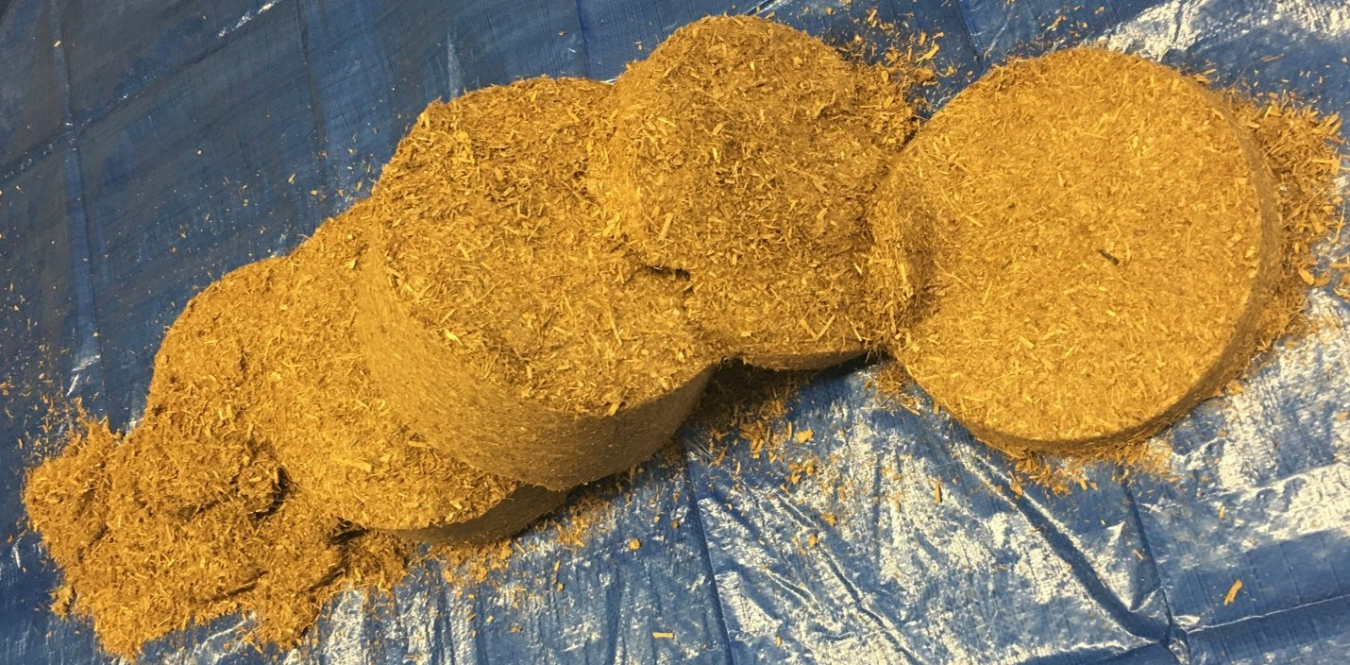How Idaho National Laboratory's Dr. Lynn Wendt has come to understand and mitigate the detrimental impacts of biomass decay after harvest.
March 15, 2022
Author: Nichole Fitzgerald, Program Manager, Feedstock Technologies and Advanced Algal Systems
Read Nichole's bio ►
Meet the other bloggers ►
Return to Bioprose blog ►
How Idaho National Laboratory's Dr. Lynn Wendt has come to understand and mitigate the detrimental impacts of biomass decay after harvest.
Renewable biomass is one of the key clean energy resources that will help manifest a low-carbon future. However, the process of developing viable and sustainable bio-based fuels, chemicals, and products from biomass suffers from similar limitations to stored produce—they decay and expire.
Figure 1: Dr. Lynn Wendt. Image courtesy of Idaho National Laboratory
Dr. Lynn Wendt, senior scientist at Idaho National Laboratory, has dedicated much of her research toward addressing biomass decay challenges. She pioneered the development of high-moisture lignocellulosic biomass—like switchgrass, corn stover, and miscanthus—and microalgae storage and handling systems. These systems not only stabilize biomass by delaying its decomposition but also by increasing its value in downstream conversion, making it easier to break down the biomass cell walls.

Figure 2. Samples of corn stover (left) and switchgrass (right). Image courtesy of Idaho National Laboratory
A Loaf of Bread, a Quart of Milk, and a Vat of Microalgae … Will Eventually Expire
Fuel for the human body is typically grown or raised on the farm or in a garden and then stored, either as a dry good or in a refrigerator or freezer. While it’s stored, food can spoil. The same can be said for the biomass used to develop biofuels and bioproducts. After harvest, biomass is stored until it can be processed and it has a shelf life, subject to the same natural decomposition methods.
Like many of the foods we regularly enjoy, biomass and microalgae are best used when fresh or well-preserved. Physiological and physiochemical processes, like internal heat generation and decomposition, degrade bio-based materials after harvest and collection. The root of the problem is microbial respiration occurring within harvested materials, breaking down large molecules which are converted to carbon dioxide and lost to the atmosphere. These processes can rot, or shrink the biomass materials and can even in very rare cases cause spontaneous combustion.
Who Wants to Live Forever? Using Science to Control Rot and Decay
Dr. Wendt’s course of research and discovery on value-added biomass storage systems began in 2007 as she worked to define an approach to preserve high-moisture corn harvest remnants (e.g., corn stover) from uncontrolled decomposition. These efforts began her quest to understand the critical factors to carbon retention during storage and the use of microbial fermentative byproducts (e.g., CO2 and methane), anoxic environments (i.e., without oxygen), and other approaches to stabilize biomass storage systems and add value.

Figure 3. This is a depiction of the feedstock logistics supply chain for wet storage. Image courtesy of Idaho National Laboratory
The laboratory and field studies that Dr. Wendt organized defined both the practical considerations for biomass stabilization1 and the economic2 and environmental value proposition for this approach. It was while researching corn stover that Dr. Wendt expanded her research scope to include microalgae. Her goal was to manage its moisture and stability challenges. Microalgae has a high potential to remove atmospheric carbon as well as to be used for biofuels and byproducts development.
Microalgae: Not Your Average Pond Scum
The microalgae moisture and stability challenges stem from inherently metabolically active conditions due to the combination of actively growing microalgae cells and the diverse bacterial community associated with outdoor cultivation ponds. If left to their own accord in high moisture environments post-harvest, microalgae can lose nearly half their value in one month. During their research on microalgae, Wendt and her team identified conditions that shifted microbial communities within microalgae storage ecosystems for preservation and production of value-added metabolic products for downstream conversion,3 namely as lactic and succinic acids.
Corn to Algae to Corn: The Path to Value-Added Biomass Storage Is Not Linear
Applying lessons learned from her studies on post-harvest microalgae as value-added chemical producers4, Wendt then applied the principle of value-added storage back to corn stover biomass, which ultimately spurred one of her fundamental scientific achievements: developing value-added storage systems for corn stover.
Dr. Wendt’s team embarked on a pathway to reduce the barriers responsible for biomass recalcitrance, or the resistance of plant cell walls to breakdown by enzymes and microbes.
Focusing her research at the cellular level, Dr. Wendt began by observing the natural biomass recalcitrance within corn stover cell wall layers and tissues. She studied how these factors could be shifted during long-term high moisture storage, causing the plant’s cell wall becomes easier to breakdown. The alkali is sprayed onto freshly harvested corn stover, which is then compacted to remove oxygen and then stored so that alkali reacts with other elements in the corn stover to further breakdown the biomass. The culmination of this work involved detailing the fundamental connections and characterization of alkali-assisted storage to the downstream processing and reactivity of corn stover. Alkali added to the corn stover is a method to remove lignin, a compound in the cell walls of plants that makes them rigid and woody. Facilitating lignin removal during long-term storage and before further downstream processing, offers a more elegant, innovative, and cost-effective biomass feedstock processing method5.

Figure 4. Alkali storage for corn stover helps create a more cost-effective biomass feedstock processing method. Image courtesy of Idaho National Laboratory
Securing the nation’s supply chains from uncontrolled loss in biomass storage is critical to increased production of decarbonized, sustainable biofuels and products. Through her scientific innovation and team leadership, Dr. Wendt is bridging the gap between fundamental and applied sciences and exploring an approach critical for commercialization of sustainable bioenergy.

[1] Compatibility of High-Moisture Storage for Biochemical Conversion of Corn Stover: Storage Performance at Laboratory and Field Scales, Frontiers in Bioengineering and Biotechnology, https://doi.org/10.3389/fbioe.2018.00030
[2] Techno-Economic Assessment of a Chopped Feedstock Logistics Supply Chain for Corn Stover, Frontiers in Energy Research, https://doi.org/10.3389/fenrg.2018.00090
[3] Evaluation of a high-moisture stabilization strategy for harvested microalgae blended with herbaceous biomass: Part I—Storage performance, Algal Research, https://doi.org/10.1016/j.algal.2017.05.016
[4] Microbial Community And Chemical Changes Related To Biological Self-Heating And Heat Damage During Storage Of Corn (Maize) Stover Biomass Feedstock.
[5] Screening of Alkali-Assisted Storage Conditions to Define the Operational Window of Deacetylation within Storage Systems in the Bioenergy Supply Chain, Biofpr, https://doi.org/10.1002/bbb.2288
Nichole Fitzgerald

Dr. Nichole Fitzgerald is the Advanced Algal Systems (AAS) and Feedstock Technologies (FT) Program Manager in the Bioenergy Technologies Office (BETO) at the U.S. Department of Energy. Nichole has pioneered several bioproduct and functional replacement initiatives for BETO. As the Program Manager for the AAS and FT Programs, Nichole oversees $80M in annual appropriations aimed at advancing the state of technology for algal biofuels production and feedstock supply and logistics.
Prior to her current role, Nichole developed new initiatives for BETO including BOTTLE, which develops new biobased recycling and upcycling technologies; ChemCatBio, an Energy Materials Network consortium focused on catalysis for bioenergy applications; and BioESep, a national lab-led consortium on separations for bioenergy. Nichole served as an AAAS Science and Technology Policy Fellow at BETO and was an NIH post-doctoral fellow at the University of California, Berkeley where she developed highly effective reagents for pharmaceutical applications.
Nichole earned her Ph.D. in Chemistry from Stanford University and a B.S. in Chemistry from the College of William and Mary.

